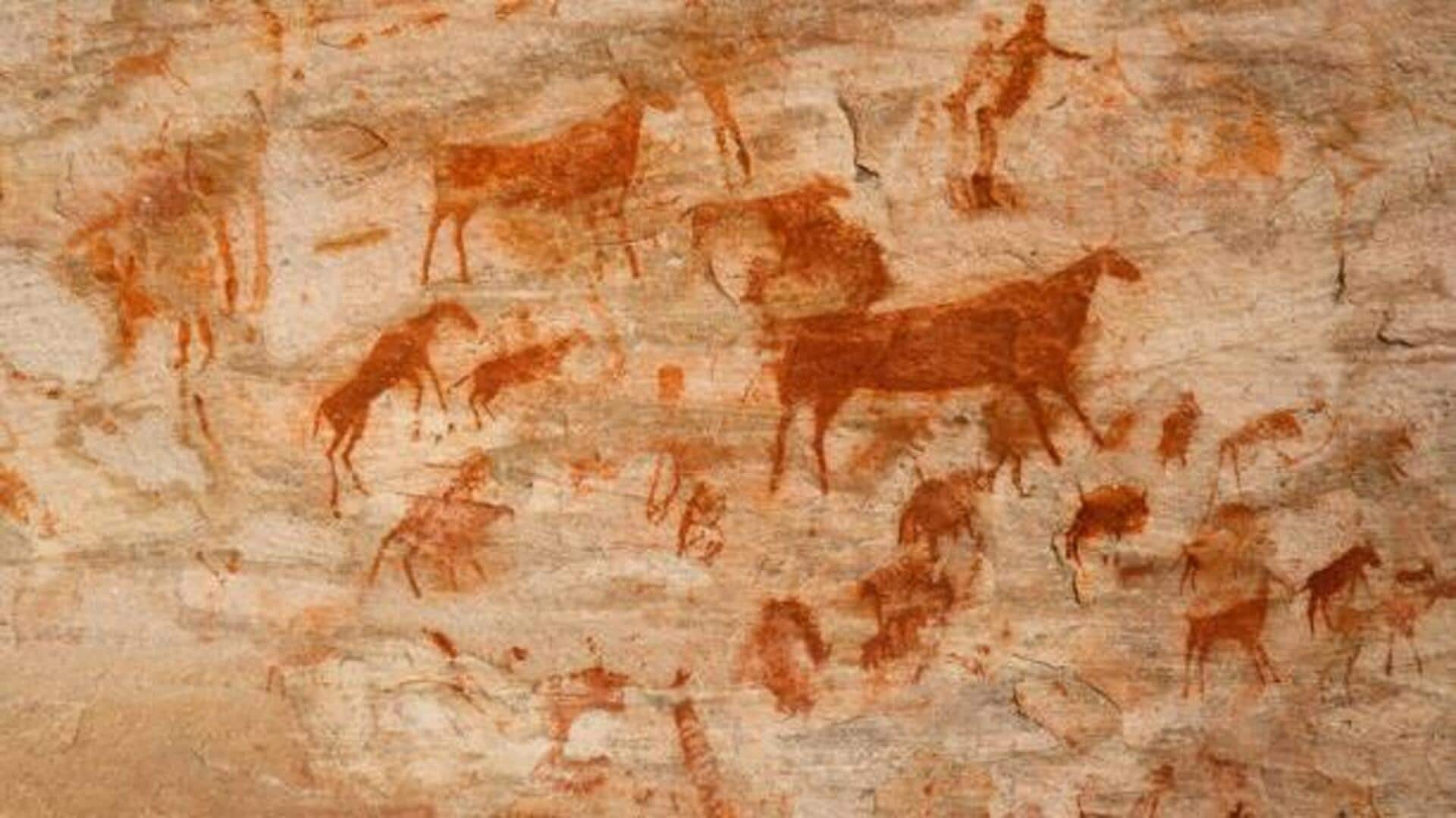
5 timeless methods used in ancient rock art
What's the story
African rock art is a captivating glimpse into history, displaying the imagination and cultural expressions of ancient communities. Found throughout the continent, these artworks unveil a range of techniques that early artists used to portray their environment and beliefs. The methods adopted for crafting these artworks are as diverse as the cultures they depict. Here, we take a look at five timeless techniques uncovered in African rock art.
Carving
Engraving with stone tools
Engraving has been one of the earliest techniques used in African rock art. Artists used stone tools to carve images directly on rock surfaces. This method involved chipping away the surface to make lines and shapes. The durability of this technique has helped many engravings survive thousands of years, giving us a glimpse of ancient life.
Painting
Pigment application on rock surfaces
Another common technique was painting with natural pigments. Artists sourced materials like ochre, charcoal, and clay to create vibrant colors. These pigments were mixed with binders like plant sap before being applied to rock surfaces using fingers or brushes made from plant fibers or animal hair.
Stenciling
Use of stencils for precision
Stenciling was another technique used to create exact shapes and patterns on rocks. Artists would place their hands or other objects against a surface and spray pigment around them with their mouths or hollow bones. This technique produced striking negative images which have survived the test of time.
Etching
Scratching for detailed imagery
Etching included scratching fine lines into softer rock surfaces with sharp tools from harder stones or metal, once it became accessible. This technique allowed artists to create detailed imagery, including intricate designs depicting various aspects of daily life and spiritual beliefs. Through etching, these ancient creators captured the essence of their surroundings and beliefs with incredible precision and depth.
Mixed methods
Combining techniques for complex artworks
Some artists even combined several techniques in one artwork to create more elaborate compositions. For instance, they could engrave for outlines but fill in the details with painted pigments or stenciled patterns. This gave their creations depth and dimension, displaying their versatility and innovation as artists.